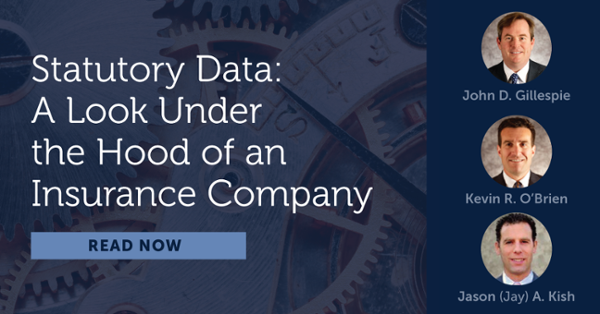As an investor, if you had access to more detailed information other than the GAAP (Generally Accepted Accounting Principles), wouldn’t you use it? GAAP data provides a uniform set of rules and formats to facilitate analysis by investors and creditors, and in this regard, it has greatly helped provide a level of uniformity to corporate financial reporting.1
But there are multiple sets of reporting books beyond GAAP for many of the companies we look at. These include regulatory filings that are more detailed than the GAAP data that most of the street spends their time analyzing. Today we will touch on what we look at in the insurance industry, and the following two blogs will touch on the banking and consumer industries.
Also, we are in the process of publishing an in-depth report on how we analyze insurance companies, so if this content is of interest to you, make sure to subscribe to our blog to receive this report.
Insurance Companies
Insurance companies are regulated at the state level, by 50 different state insurance departments. Each company is required to file financial statements in every state in which the insurer writes business. This data is publicly available. Statutory reporting is generally (1) more conservative than GAAP, and (2) includes greater granularity than the information provided within SEC documents. Therefore, statutory data is an excellent source of information for fundamental insurance company analysis.
Detailed/thorough information we can find in statutory data (vs GAAP):
-
-
- Premiums by line of business. We are able to ascertain who is growing, who isn’t, and where the growth is happening (growth can be “a bad thing” in a commodity business). Not every company discloses this type of data per GAAP.
- Reserves by line of business. Reserves for lines of business that pay-out over a long period of time, like medical malpractice, get analyzed much differently than reserves for lines with short pay-out periods, like property/fire coverage. In GAAP, reserves tend to be aggregated. Detailed claim payment info (by line), when combined with reserve disclosures, yields effective reserve adequacy analysis.
- Market share data. This allows us to see which companies are perhaps over-exposed to states with greater catastrophe risk, or greater regulatory risk. GAAP disclosures can be more vague/general.
- Reinsurance information (“insurance of insurance companies”). In statutory data, one can see the complete list and percentages of where an insurance company is using reinsurance, and whom they are buying it from.
- Investment details. Statutory data discloses specific stocks, bonds, etc. GAAP generally aggregates the categories.
- Statutory surplus & earnings. This is important because publicly-traded insurance corporations are generally only holding companies of individual insurance companies – the earnings and capital generation of these insurance companies is determined using only statutory accounting. Then they pay dividends to the “parent company” (the public corporation). Therefore, ascertaining true “cash flow” for an insurance corporation (i.e. dividends received) requires an understanding of the statutory capital/earnings first.
- Premiums by line of business. We are able to ascertain who is growing, who isn’t, and where the growth is happening (growth can be “a bad thing” in a commodity business). Not every company discloses this type of data per GAAP.
-
If you would like to be notified when we release new blogs, please let us know!
Just complete the form on this page and we will deliver our insights to your inbox once per week.


